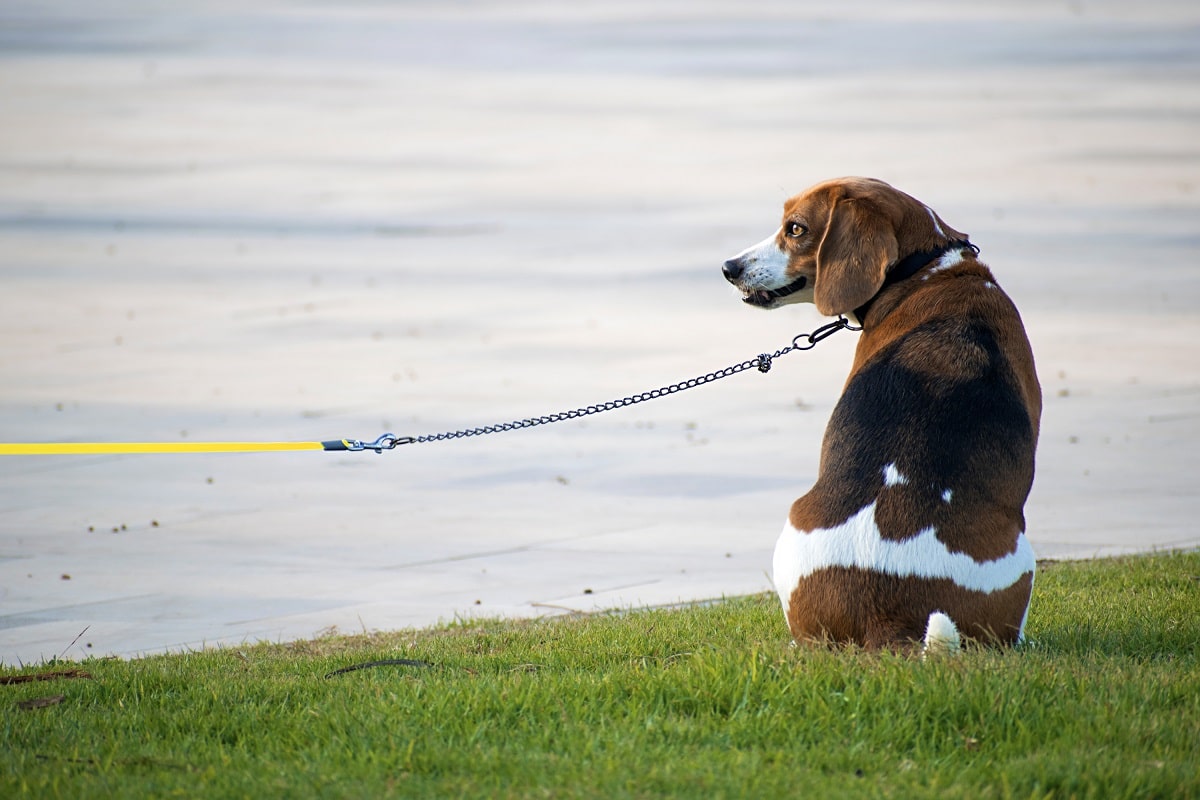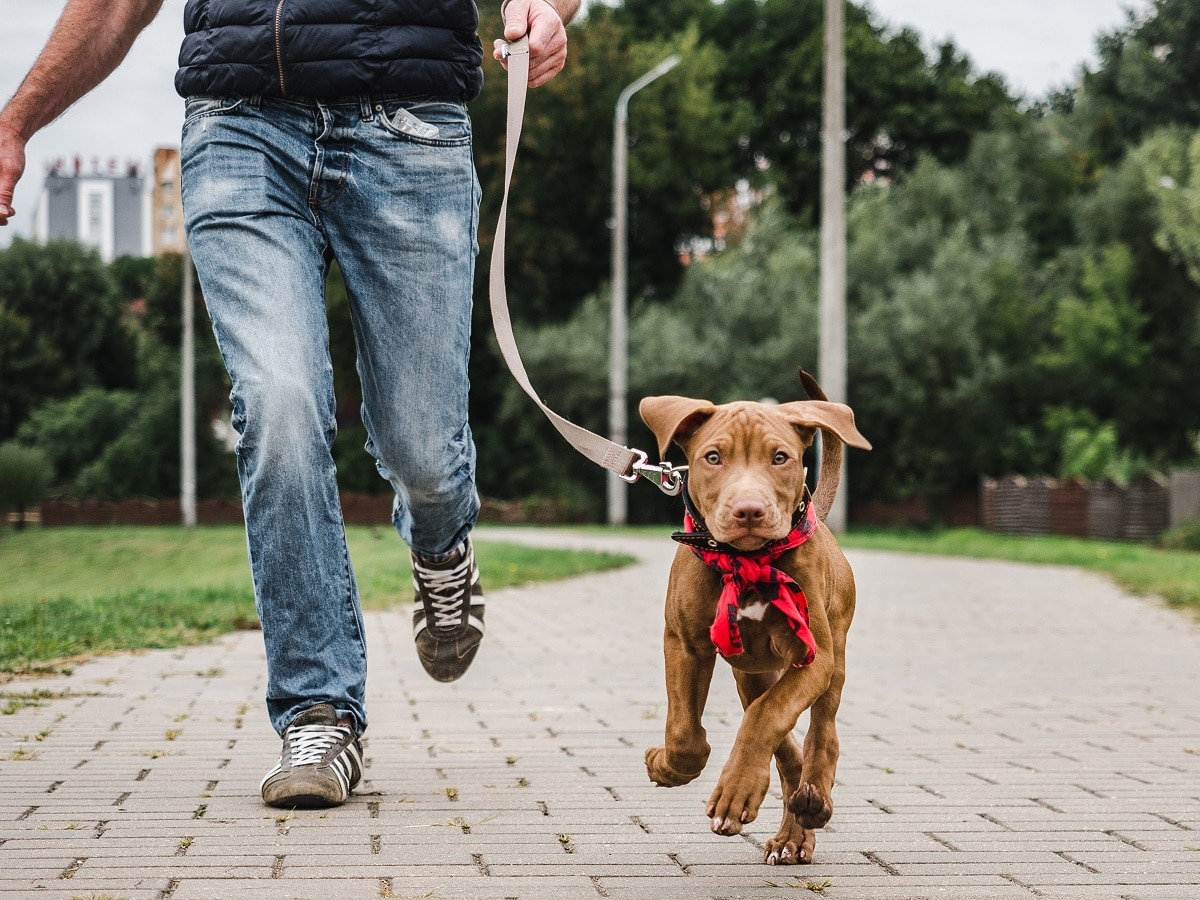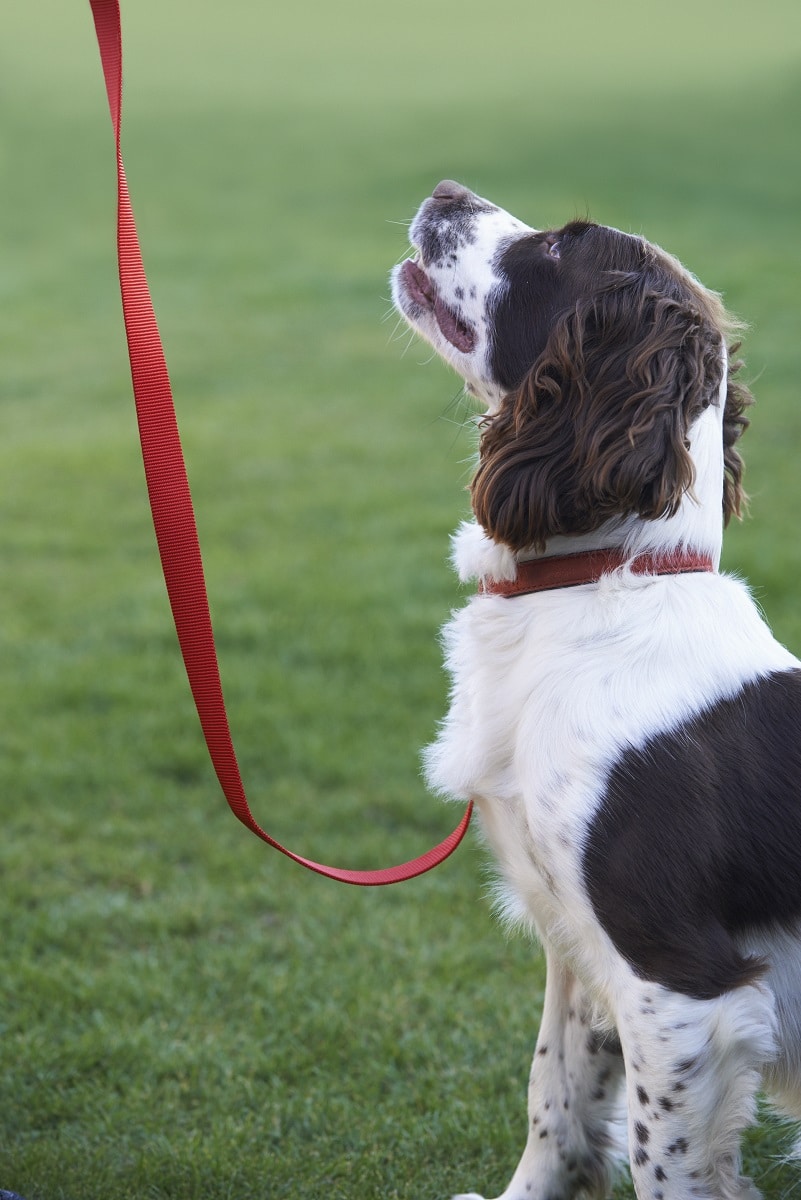Many new dog owners mistakenly assume that their furry, four-legged friend instinctively knows how to properly walk on a leash. However, odds are you will have to leash train your puppy to walk politely and correctly. This is a very important skill for puppies to learn, and this is one skill that dog owners will appreciate and value each time they walk their dog.
Steps to Leash Train Your Dog
Make The Introduction
The first thing to do as a dog owner is to introduce your puppy to a collar and leash, or a harness if you prefer. Acclimate your puppy to his collar or harness by having him wear it for a few minutes each day while in the house. While your dog is wearing the collar or harness and leash, be sure to play with him and offer treats. Your dog will begin to enjoy wearing the collar and leash because it is representative of play and treats.
The Importance Of Cues to Leash Train
Puppies should also be introduced to sounds or cues that let them know that they are about to get some food. Some dog owners make a clicking sound, while others may use a certain word.
Specific sound cues do not matter because the approach remains the same. In an area that is free from distractions, the leash and collar should be placed on your puppy. Hold the end of the leash in your hand so that your puppy is not able to stray. Then, make the sound or say the word you selected to get your puppy’s attention. Once you have his attention, give him a treat. After repeating this several times, your puppy will start to understand that this cue means a reward is coming and will begin to approach you so they can get a treat.

Once your puppy is coming towards you, start moving back a few steps. Each time move a step back.
Continue with this exercise and make the sound cue until your puppy starts to approach and walk along.
Keep in mind that puppies do not have long attention spans. Make sure these indoor leash train practice sessions do not last more than a few minutes each time. Also, end the leash train sessions if your puppy appears to be physically or mentally tired.
Go Outside
Once your puppy has shown that he is willing to obey commands with sound cues and treats, it is time to test his skills outside. Moving to leash train outside may present a challenge. There are many smells, sounds, and sights that will intrigue him. During this training time, it is important to be patient. The first few walks you take your puppy on should be short. Short walks allow him to get used to his surroundings outside and become accustomed to distractions. If you see that your puppy is distracted or he is ready to lunge, stop where you are and make the sound cue and move a few steps away from your puppy. Only give him a treat once he follows your commands.
When Is The Best Time of Day To Leash Train A Dog?
One of the most exciting times of the day for dogs is when they are able to go out for a walk with their owner. Most dogs tend to get overly excited when this time of day arrives. However, it is critical that good behavior and calm demeanor are enforced before the walk begins.

The best time of day to start leash training your dog is when he is going out for his regular bathroom walks. That means leash training begins as soon as you wake up and your dog wants to go outside. Before your dog goes outside in the morning, have him wait by the door using a sound cue or other commands. Do not make him wait too long, so that you can avoid any accidents in the house. Be sure to keep your dog’s collar and leash near the door you are leaving from.
How to Loose Leash Walk and Common Leash Train Issues
Even if it appears that your puppy is walking nicely on a leash, there may be some problems that come up once he is older. Problems can also appear if your dog is taken to different areas and experiences new environments and distractions.
While the first type of leash training is with a tighter grip and right next to you, be sure to also teach your dog how to loose leash walk. This type of leash walking will provide a much more comfortable walking experience for both you and your dog.
Puppy Pulling
One of the most common problems is puppy pulling. This is when your dog begins to pull in another direction or trys to drag you for a walk. When this occurs, stop where you are and do not allow your dog to go any further. Stand still until your dog comes back towards you and stops pulling. You can also gently tug on your dog’s leash as a silent command that they need to stop. Never allow your dog to drag you for a walk.
If the pulling continues, try using leash train tools such as head halters, gentle leaders, or front-hook harnesses that are designed to work with dogs that like to pull the leash.
Lunging
Another common problem is lunging. If the puppy starts to run after someone or something during the walk, the owner should be proactive.
Before the puppy has a chance to lunge, his attention should be redirected. The owner should also make sure the amount of space between their dog and the dog’s target is increased.
Always be prepared and on alert when walking your dog outside. Lunging is popular among dogs who are herding breeds. However, any dog can lunge if he is excited or is startled by something unfamiliar.
Barking
Barking at other dogs is also a common problem that can occur during and after you leash train. This often occurs because the dog has not had enough exercise.
Dog owners should make sure that their puppies have enough physical and mental exercise that is appropriate for his breed and age. If the barking persists, dog owners can use the same strategy that is mentioned above for lunging.
Get some distance between the dog and the person or object that is causing him to be frustrated or excited. Offer the dog a treat before he begins to bark. By doing this, he will begin to associate seeing other dogs with looking at the owner so he can get a treat.

Final Notes on Leash Training Your Dog
Latchkey Pets are the experts of dog walking and more. We hope our leash train guide and tips to eliminate pulling help you and your furry best friend! Remember, it is always a good idea to keep a few treats on hand during every walk in order to reinforce good behavior while the dog is on the leash. Call Latchkey Pets for any questions and make sure to visit our website to learn more about our daytime dog walking services and vacation pet sitting services.
